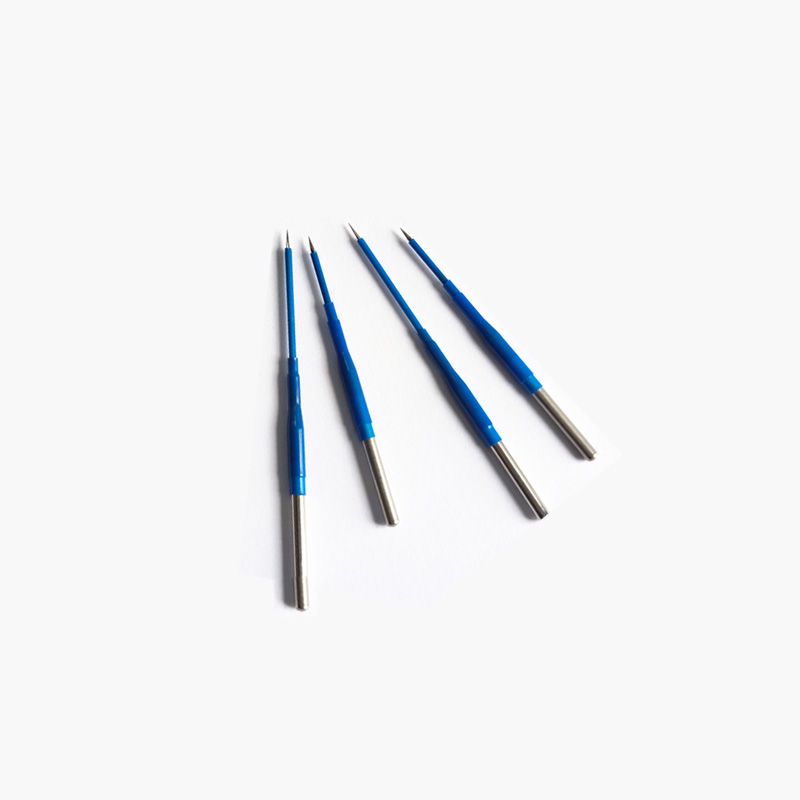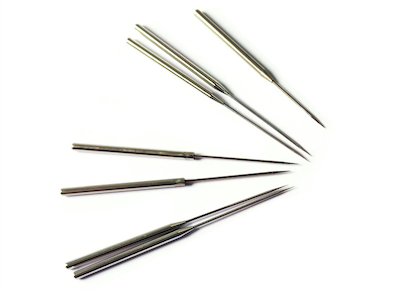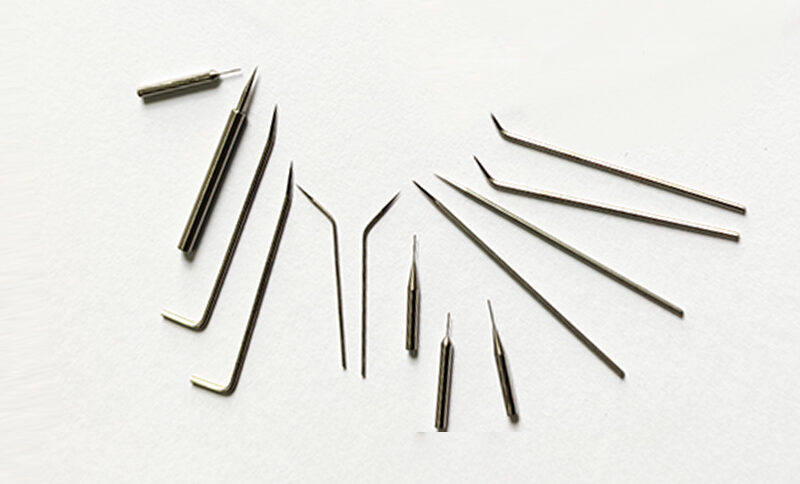Can the Tungsten Needle Cut? An Expert Guide

Tungsten needles have revolutionized precision surgery in recent years, offering surgeons unprecedented control and durability. As hospitals and clinics explore ways to improve surgical outcomes while managing costs, these specialized instruments have emerged as a compelling option worth serious consideration. This comprehensive guide explores their cutting mechanisms, applications, and advantages to help medical professionals make informed decisions.
These remarkable tools combine tungsten’s natural properties with innovative design to deliver surgical precision that standard instruments simply cannot match. Let’s explore what makes them so effective and how they’re transforming surgical practice across multiple specialties.
Table of Contents
How Do Tungsten Needles Cut?
Tungsten needles cut in two main ways: mechanical cutting and electrosurgical cutting. Each approach offers unique benefits for different medical applications.
Electrosurgical Cutting
Tungsten Cutting Needle by Yolo
Where tungsten really shines is in electrosurgery. When connected to high-frequency electrical generators, these needles become precision electrosurgical instruments.
The process works through:
- Focused electrical current delivery to specific tissue points
- Quick heating that vaporizes cellular fluid
- Simultaneous cutting and coagulation
This dual-action gives surgeons unprecedented control during delicate procedures. Studies show electrosurgical tungsten needles produce clean margins with minimal thermal damage to surrounding tissues.
| Property | Value | Comparison to Steel |
|---|---|---|
| Melting Point | 3,422°C | higher than surgical steel |
| Hardness (Vickers) | 400-500 | harder than surgical steel |
| Tensile Strength | 1510 MPa | stronger than surgical steel |
| Edge Retention | 250+ procedures | longer than standard needles |
| Thermal Conductivity | 173 W/(m·K) | Lower than steel |
| Corrosion Resistance | Excellent | Superior to most metals |
These properties translate into real clinical advantages. Surgeons find they need much less pressure to make clean cuts compared to traditional instruments, which reduces hand fatigue during long procedures. The exceptional hardness means these needles stay sharp through hundreds of uses—far outlasting traditional materials.
Superior Benefits
- Non-adhesion Technology: Prevents tissue sticking, allowing for clean and precise cuts.
- Minimal Incision Size: Requires significantly smaller incisions compared to traditional surgical methods.
- Reduced Bleeding: Advanced design minimizes blood loss during procedures.
- Shorter Surgical Time: Optimized for efficiency, reducing overall procedure duration.
- Minimal Post-operative Pain: Patients experience less discomfort following procedures.
- Rapid Recovery: Accelerated healing time allows patients to return to daily activities sooner.
- Minimal or No Scarring: Superior cosmetic outcomes with virtually invisible scarring
Medical Applications of Tungsten Needles
These remarkable properties make tungsten needles essential across many medical specialties.
Microdissection
Tungsten Cutting Needle by Yolo
When it comes to microdissection, precision is everything. Tungsten needles excel at:
- Separating delicate tissue planes with minimal disruption
- Isolating individual cellular structures for research
- Creating microscopic incisions in laboratory specimens
Neurosurgeons particularly value these needles for procedures requiring microscopic precision around vital neural structures.
[Surgical scene showing microdissection procedure using tungsten needle]
Oncological Surgery
Tumor removal demands both precision and reliability. Tungsten needles offer oncologists:
- The ability to remove malignant tissue with minimal margin damage
- Reduced blood loss through electrosurgical coagulation
- Cleaner tumor boundaries for pathological examination
The combined cutting and coagulation properties make these needles especially valuable in highly vascular tumor removals.
Ophthalmology
The eye’s delicate structures require exceptional precision instruments. Ophthalmologists use tungsten needles for:
- Corneal incisions
- Vitreoretinal procedures
- Lacrimal system surgery
The stability and sharpness give ophthalmologists greater confidence during challenging microsurgical procedures.
Comparing Tungsten Needles to Other Surgical Tools
Tungsten Cutting Needle by Yolo
How do tungsten needles stack up against other common surgical cutting instruments?
| Feature | Tungsten Needles | Stainless Steel Scalpels | Harmonic Scalpels | Diamond Knives | Laser Systems |
|---|---|---|---|---|---|
| Initial Sharpness | Excellent (0.01μm tip) | Excellent (0.5μm edge) | N/A | Superior (0.005μm) | N/A |
| Edge Retention | Superior (250+ uses) | Good (10-20 uses) | N/A | Excellent (100+ uses) | N/A |
| Thermal Spread | Minimal (0.1-0.2mm) | None | Moderate (1-3mm) | None | Variable (0.3-2mm) |
| Tissue Healing Rate | Excellent (5-7 days) | Excellent (5-7 days) | Good (7-10 days) | Superior (3-5 days) | Variable (7-14 days) |
| Hemostatic Capability | High | None | Very High | None | Moderate to High |
| Reusability | High | Limited | Moderate | High | N/A (consumables) |
| Initial Cost | Higher ($150-300) | Lower ($20-40) | Highest ($300-500) | Very High ($500+) | System: $30,000+ |
| Cost Per Procedure | $0.60-1.20 | $2-4 | $15-30 | $5-10 | $10-25 |
Surgical experts say tungsten needles hit a sweet spot—offering better precision than traditional scalpels while causing less thermal damage than harmonic devices.
Performance in Specialized Procedures
For specialized procedures requiring both precision and hemostasis, tungsten needles show clear advantages:

- Neurosurgery: Less thermal spread means safer operations near neural structures
- Plastic Surgery: Cleaner incisions promote better cosmetic outcomes
- Orthopedic Surgery:Offer exceptional precision, minimal thermal damage, and enhanced durability, making them ideal for delicate bone
Research shows the unique combination of sharpness and controlled electrosurgical properties makes tungsten needles ideal for these demanding applications.
[Comparison image showing tissue samples cut with different surgical tools]
Advantages and Limitations of Tungsten Needles
What makes tungsten needles special, and where do they fall short? Let’s look at the full picture based on clinical data and surgical experiences.
Key Advantages
Tungsten Microdissection Cutting Needle
- Incredible Durability: These needles stay sharp, compared to stainless steel. Some surgeons report using a single needle effectively for over six months of regular use.
- Precision Control: Tungsten’s rigid structure allows for movement accuracy within 5 microns. This microscopic precision is crucial in neurosurgery and ophthalmology, where submillimeter accuracy can determine success.
- Less Tissue Trauma: Studies suggest tungsten needles produce significantly less cellular disruption at incision margins than conventional scalpels. This potentially translates to faster healing times and reduced inflammatory response.
- Thermal Stability: With that remarkable 3,422°C melting point, these needles maintain their shape even during extended electrosurgical use where tip temperatures. Unlike stainless steel electrodes that deform after about 50 uses, tungsten keeps going strong.
- Biocompatibility: Tungsten shows excellent biocompatibility with a cytotoxicity index , reducing adverse tissue reaction risks and supporting better recovery.
Notable Limitations
- Higher Upfront Cost: Quality tungsten needles typically cost each compared to premium stainless steel. However, the per-procedure cost actually works out lower, thanks to tungsten’s exceptional longevity.
- Heavier Feel: At 19.3 g/cm³, tungsten instruments are roughly heavier than stainless steel equivalents. While this weight provides stability for precise movements, it can cause hand fatigue in procedures.
Most medical professionals find these limitations are outweighed by the performance benefits for appropriate applications.
Expert Recommendations
Where do tungsten needles shine, and where should you stick with alternatives?
Tungsten Electrosurgical Cutting Needle
Ideal Applications
- Microsurgical procedures: These needles offer significantly improved precision compared to standard instruments—crucial when working at sub-millimeter scale
- Neurovascular interventions: The precision and hemostatic capabilities can reduce procedure time and decrease blood loss in these delicate operations
- Oncological excisions: Tumor removal procedures benefit from cleaner margins, potentially impacting recurrence rates and outcomes
- Extended ophthalmological procedures: The stability and longevity can reduce instrument exchanges, improving workflow efficiency
Less Ideal Applications
- Basic general surgical procedures: Standard scalpels remain cost-effective for routine procedures not requiring microscopic precision
- Field medicine settings: Limited access to specialized sterilization equipment may compromise maintenance
- Facilities with severe budget constraints: Despite lower long-term costs, the initial investment may be prohibitive
- Procedures requiring extreme instrument flexibility: Tungsten’s rigidity, while great for precision, limits applications requiring significant bending
Success with tungsten needles comes down to matching the right tool to the specific surgical need, with proper training and maintenance. Multiple studies show that when appropriately applied, tungsten needles lead to measurable improvements in efficiency, precision, and patient outcomes.
[Clinical image showing successful outcomes from tungsten needle procedures]
Finding Quality Tungsten Needle Solutions
When considering implementing tungsten needles in your practice, it’s important to look for suppliers with the following qualifications:
Key Selection Criteria
- Value and pricing structure: Consider manufacturers that offer direct pricing models
- Manufacturing precision: Look for suppliers capable of meeting precise medical specifications
- Supply reliability: Ensure consistent availability to prevent surgical delays
- Range of options: Select providers offering appropriate configurations for your specialty
- Quality certification: Verify medical-grade quality and regulatory compliance
- Technical expertise: Seek manufacturers with substantial experience in tungsten instrument production
When evaluating suppliers, request detailed specifications, ask about sterilization compatibility, and inquire about customization options for your specific surgical applications.
Implementation Considerations
Before adopting tungsten needle technology, consider:
- Training requirements for your surgical team
- Compatibility with existing equipment and procedures
- Maintenance protocols needed to maximize instrument lifespan
- Cost-benefit analysis specific to your facility’s case volume
With proper selection and implementation, tungsten needles can be a valuable addition to surgical capabilities in appropriate specialty applications.
Conclusion
Tungsten needles are highly effective cutting tools in medical applications, particularly in electrosurgery and microdissection. Their exceptional sharpness, durability, and ability to minimize thermal damage make them invaluable for precision procedures, including orthopedic and oncological surgeries. Compared to traditional surgical tools, tungsten needles offer superior wear resistance and a more controlled cutting mechanism, whether used mechanically or with electrical currents.
While they may require specialized handling and come at a higher cost, their advantages in precision and safety often justify their use in specialized medical fields. For procedures that demand the highest accuracy with minimal tissue trauma, tungsten needles remain a top-tier choice.
Find Your Tungsten Microdissection Cutting Needle
Custom Solutions, Wholesale Prices, Direct Supply
YOLO Company Introduction
Building upon the remarkable properties of tungsten needles, YOLO introduces high-precision tungsten needle solutions tailored for advanced scientific and industrial applications.

-
Superior Benefits
- Non-adhesion Technology: Prevents tissue sticking, allowing for clean and precise cuts.
- Minimal Incision Size: Requires significantly smaller incisions compared to traditional surgical methods.
- Reduced Bleeding: Advanced design minimizes blood loss during procedures.
- Shorter Surgical Time: Optimized for efficiency, reducing overall procedure duration.
- Minimal Post-operative Pain: Patients experience less discomfort following procedures.
- Rapid Recovery: Accelerated healing time allows patients to return to daily activities sooner.
- Minimal or No Scarring: Superior cosmetic outcomes with virtually invisible scarring.
-
Manufacturing Excellence

At YOLO, we control the entire production process from raw material refinement to final machining, ensuring stable quality and high precision. Our tungsten needles are available in ultra-fine sizes starting from 5µm, meeting the most demanding application requirements.
Each needle electrode undergoes rigorous biocompatibility testing to ensure full compliance with medical device standards and patient safety requirements.We offer comprehensive custom machining services, including:
Customizable Tip Geometry:
Available in sharp, platform, or arc configurations with precisely controlled curvature radii (1μm, 5μm, 10μm) to match specific surgical requirements. This precision enables minimal thermal damage to surrounding tissues, critical for delicate procedures.
Superior Surface Finishing
Mirror-polished surfaces with roughness below 0.25Ra prevent tissue adhesion and significantly reduce thermal damage during procedures. This enhances surgical precision while preserving pathological tissue integrity.
Dimensional Stability
Leveraging tungsten's extraordinary properties (3410°C melting point, exceptional mechanical strength, thermal stability), our instruments maintain dimensional accuracy and performance even under demanding surgical conditions.


Premium Tungsten Needle, Yolo's Own Raw Materials
Elevate your surgical performance with our high-purity tungsten needles. Designed for durability and precision, these electrosurgical tools ensure minimal tissue damage and maximum efficiency.




